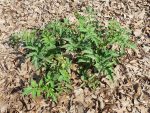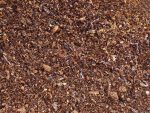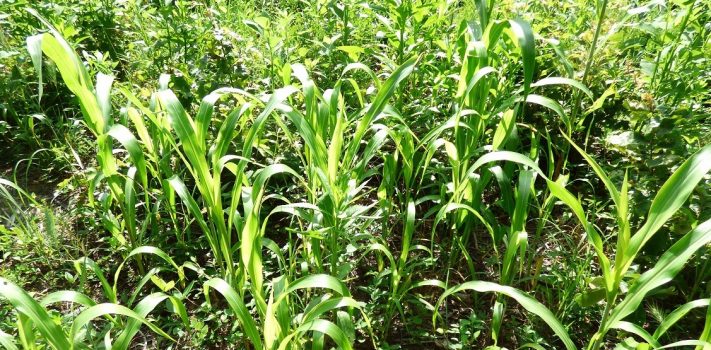We see it all the time: photos of blue-ribbon gardens with beautiful flowers and mouth-watering tomatoes, beans and squash. Everything is neat and tidy, well groomed, and not a weed in sight. People get all excited, visions of seed-catalog covers dancing in their heads, and decide they just have to start a garden so they too can have some of that fresh produce and flowers. A month later their garden more closely resembles an advertisement for Round-Up than anything they may have seen on the cover of Organic Gardening. How, oh how, do we make our gardens look like the one on the seed-catalog cover?
In T.J. Dixon’s recent article Survival Gardening: The Most Vital Prep and J.M.’s recent Black Gold: Organic Matter, both pointed out the oft-repeated advice that you’re not going to open up that can of survival seeds on Day One of TEOTWAWKI and be able to be a successful gardener without previous experience, even with Gardening for Dummies to guide you along the way. This is probably the single-most important piece of gardening advice those preparing for TEOTWAWKI can internalize: only with lots of previous experience can you harvest enough calories to get you through Phase One of bad times.
I couldn’t agree more with these two well-written articles on Gardening and Composting, and I’d like to add a third skill to be perfecting right now: Weeding. I know, it seems like anyone with the IQ of cat food can go out and pull weeds but I hope by the end of this article you’ll see that’s not the case. I also hope you can add intelligent weeding to the other items on your list of preps to start living now.
OVERCOMING ANTI-WEEDING SENTIMENTS
The main problems with pulling weeds for most people are the sheer monotony, the physical effort, and the thought that we could be doing something way more productive with our time like organizing our sock drawer. Just the word “weed” (not that kind!) brings negative feelings to anyone who’s tried gardening, from the newbie to the old hand.
To help overcome these negative feelings which prevent us from managing weeds more intelligently, I offer the following ideas which I incorporate into my own gardening and composting programs.
Attitude
Attitude is important in most things in life and weeding is no exception. I try to remain positive by thinking of the benefits of weeds. I’m not pulling weeds, I’m harvesting compost. I’m not cutting the lawn and pasture, I’m making mulch for the garden. Both compost and mulch are indispensible to gardening so these are both very positive aspects of weeds for me.
Another plus for me is that weeding is a time to be alone with my thoughts, philosophizing as I pull weeds while pondering life, liberty, and the pursuit of happiness. I get to be Plato in the pea patch. While weeding, I’ve written many poems, parodies, and SB articles in my head, and had solutions to come to me for problems which were ruminating in the back of my mind, waiting for just the right moment to come to the surface in that “aha!” moment.
Prevention: Mulches
The first step to winning the war on weeds is to prevent them in the first place. The single-best way to prevent weeds is with mulches. From my perspective, gardening wouldn’t even be possible without mulches.
Mulch is anything which covers the soil around garden plants. Mulches include such things as tree leaves, sawdust, hay/straw, plastic sheeting, commercial weed barriers, etc. Since I’m frugal and enjoy repurposing, one of my “super mulches” is old blankets and area rugs from estate auctions and thrift stores. The rugs in Photo 1 set me back $2 for the lot.

After positioning them in the garden, they’re hidden under leaves or other more attractive mulches. They last for years and allow water to pass through while preventing weeds from coming through as they germinate. These work especially well in areas such as my tall A-frame bean trellis which is difficult to get underneath for weeding (Photo 2). With these long-lasting types of mulches it’s important to pull them up at the beginning of each season to detach them from the ground, then put them back down and reapply the “pretty” mulch on top.

Some mulches can be put down long before planting, others right before planting, and yet others once the young plants have grown some. Only experience will tell you which plants need what.
I have access to plenty of oak and hickory leaves so I get a head start on spring by putting them in the garden as fast as I can rake them in the fall. One lesson I learned early on is that, unfortunately, the mulch does an excellent job of keeping the ground cold long after it should have warmed up from the sun. As I moved aside oak leaves to plant my potatoes in March, much to my dismay I discovered the ground was still very cold compared to bare soil. I planted anyway and even after removing some mulch so the sun could heat the soil, the crop fell behind and I lost all I had hoped to gain by mulching ahead of time. For other crops such as tomatoes and peppers planted in May, the ground was plenty warm underneath the mulch by then. Again, only this kind of experience can help you do what’s best for your own garden. In a grid-down world, losing a month’s worth of growth on potatoes would be catastrophic considering it’s one of the most productive calorie-producing plants in the entire garden.
Oak/hickory leaves are my most common mulch and I like them for several reasons. They last a long time, they’re the easiest mulch for me to get in large quantities, and by the end of the growing season the bottom layer has turned to humus and the middle layers are beginning to break down. Another benefit of thick leaf mulches is when used with sweet potatoes, small bunches of sweet potatoes form along the vines underneath the leaves but above the soil. I grate these carrot-sized ones and freeze them in 1-lb. bags to use in my chili recipe. Oak leaves are now the only compost I use with sweet potatoes. Photo 3 shows them with tomatoes.

Another favorite mulch is old sawdust from a local sawmill. It’s the color and texture of coffee grounds but hasn’t composted much due to lack of nitrogen (Photo 4). I use this strictly on top of the soil as mulch, never tilled in or it steals nitrogen from plants. As time passes, the layer in contact with the soil breaks down into fine compost and improves the soil. Each spring, I rake it up to move any weed seeds which may have blown on top of it during the growing season lower into the pile, then rake it all back in place, leaving fewer seeds on top. My peanut crop this year is planted in one such area and the only weeds I’ve dealt with so far are a few buckwheats from last year’s experimental crop, and the ever-present morning glories which can probably grow up through concrete if my experience is any indication. Both of these weeds make good compost and are easy to pull up.

What I like about grass clippings is that they tend to mat down around plants to form a tighter weed barrier and can be collected all summer long for touch-up mulching where needed.
Once you start using various mulches you’ll get to know what works and what doesn’t, experience best gained sooner than later. I used box elder leaves once and discovered they break down so quickly they’re gone by midsummer. Now they go directly to the compost pile.
Aside from weed control, mulches do wonders for conserving water in the soil. Even in my region of the country where we get lots of precipitation, July tends to be rainless so mulches greatly decrease the need for hand watering.
So, start getting this mulching experience now so you’ll know what’s workable in your particular garden, instead of beginning your learning curve on TEOTWAWKI Day One along with 613 other survival skills competing for your time. In many cases it’s difficult or impractical to live our preps but for most of us, learning to garden, compost, and weed is very doable right now.
KNOW YOUR WEEDS
A topic I don’t hear discussed much but which I think is important for both weed management and composting is to know your weeds. You don’t need to learn the scientific genus and species names, or even the common names (although they can help when trouble-shooting with other gardeners) but once you begin gardening and composting, you’ll want to start getting an understanding the various characteristics of each kind of weed you have. You’ll soon discover that all weeds are not created equal. Some are the equivalent of serial killers while others have merely rolled through a stop sign at 2:00 AM in the middle of nowhere when no one was coming. A few of my weeds are “emergency weeds” when I see them poking up through the mulch but most can go on the garden to-do list. A few of mine are “good weeds” which I let grow as long as long as they’re not obstructing sunlight or crowding out my crops.
(To be concluded tomorrow, in Part 2.)










